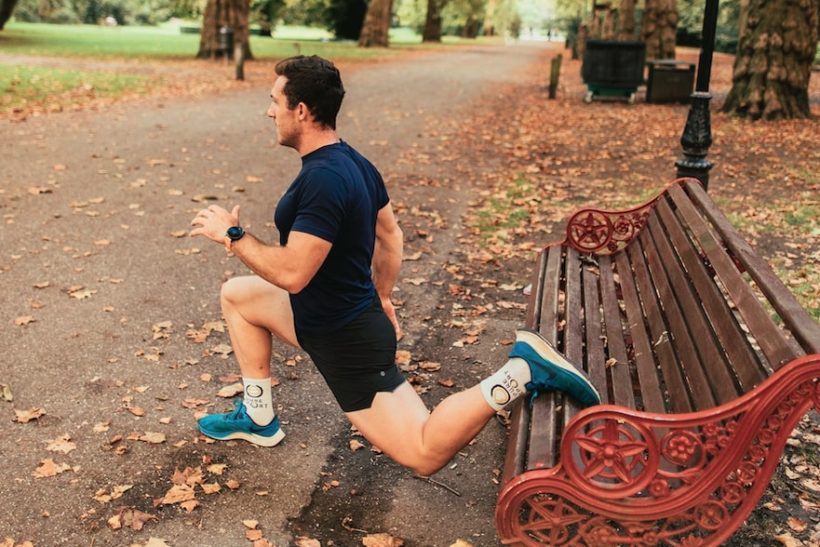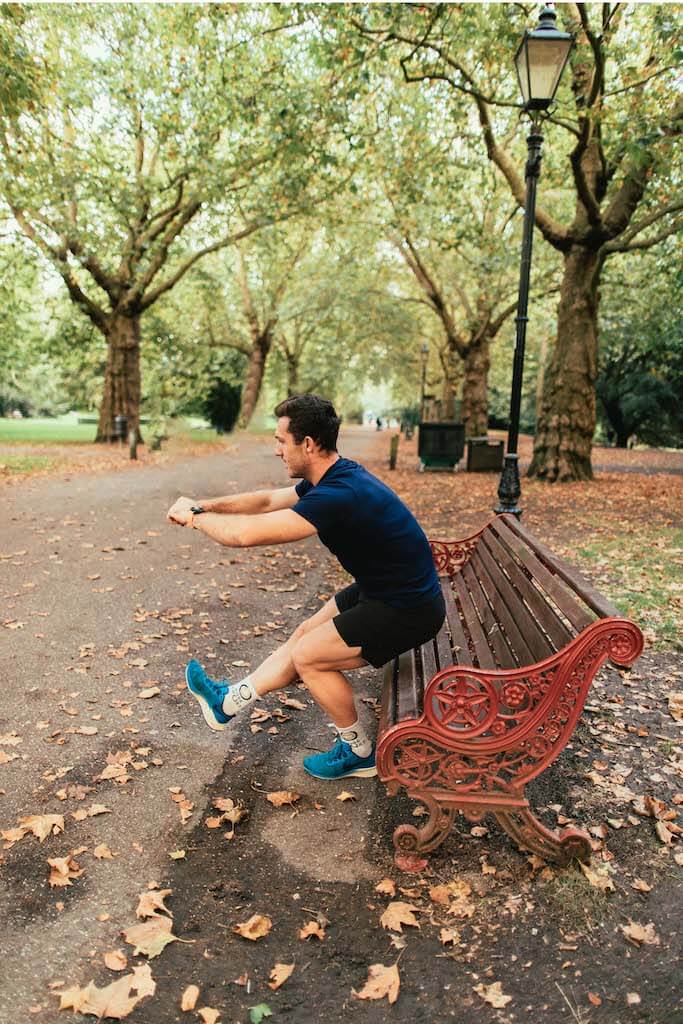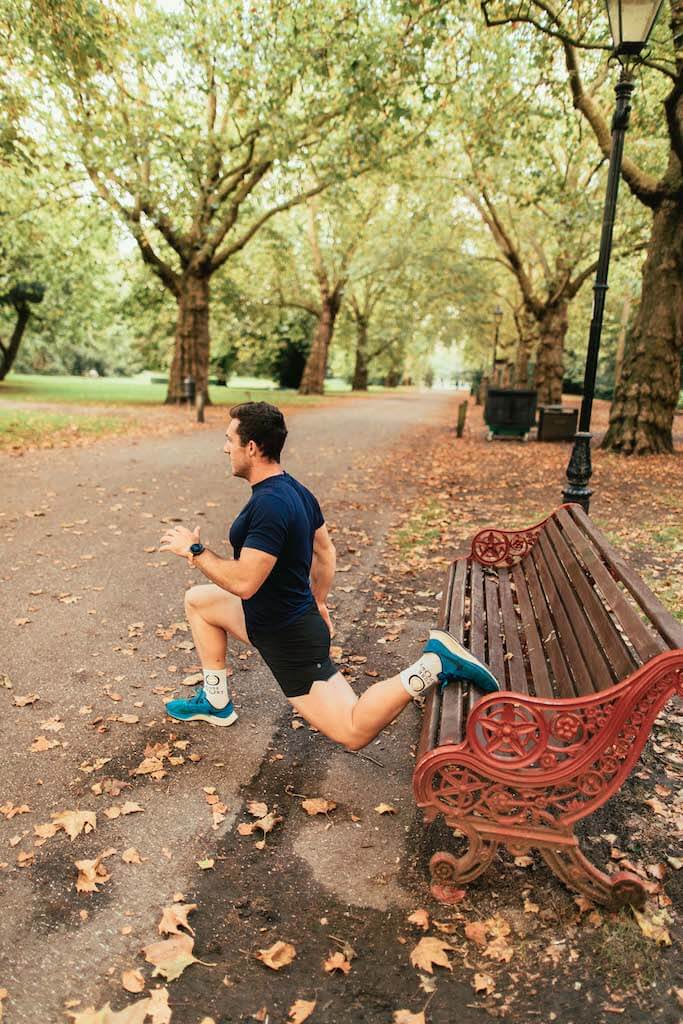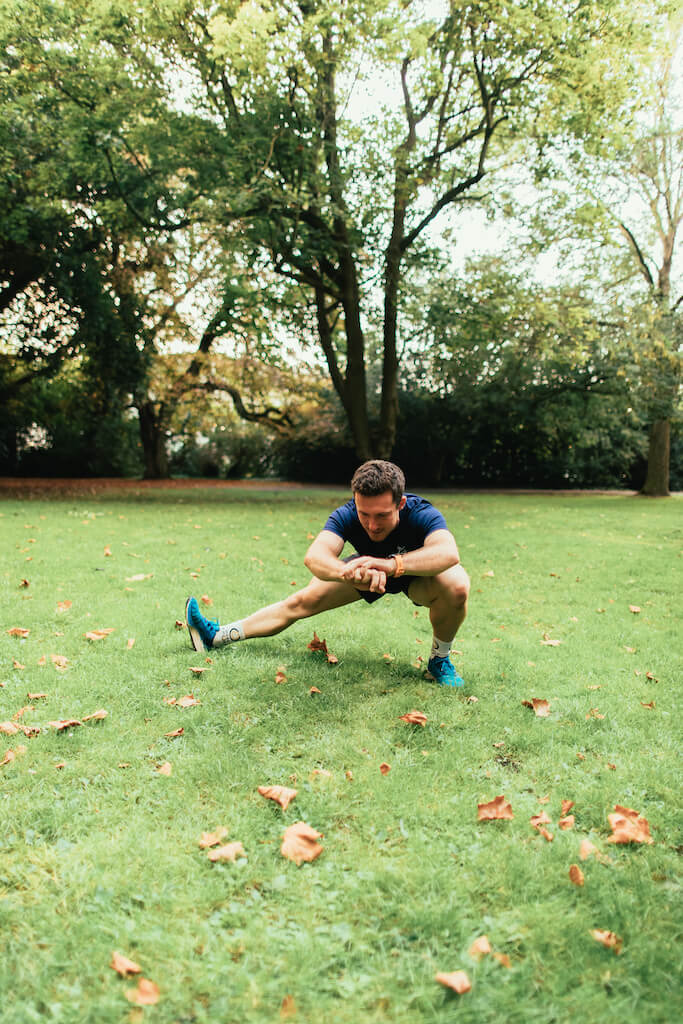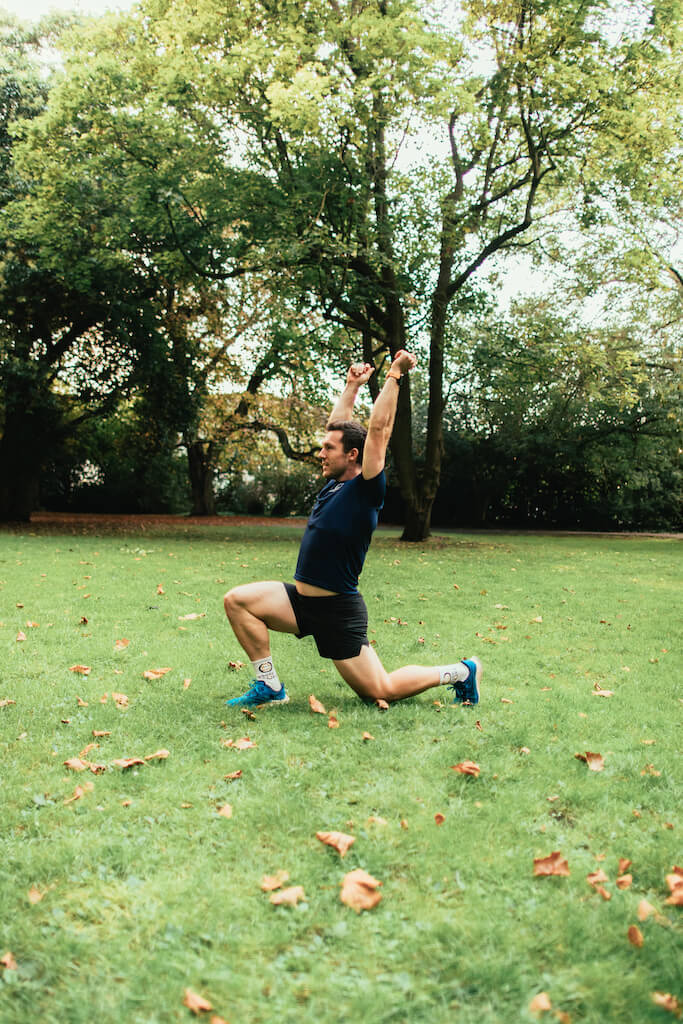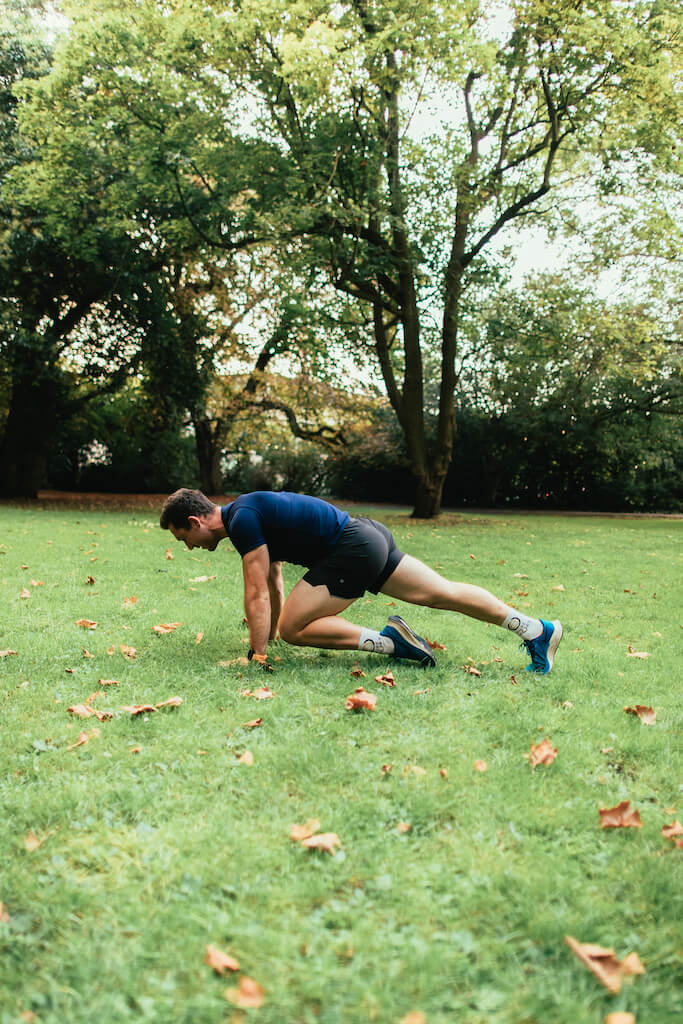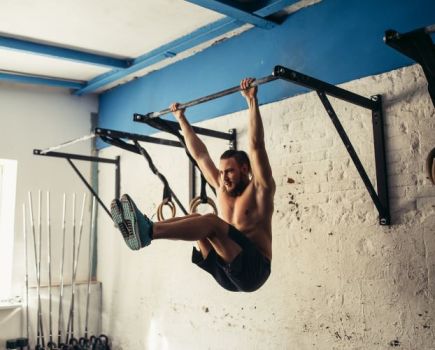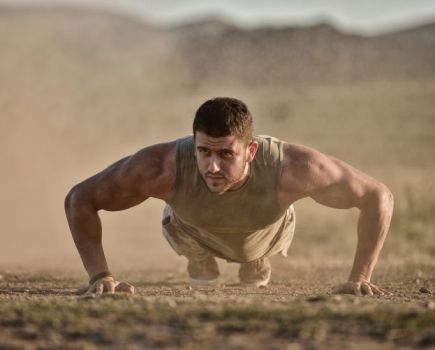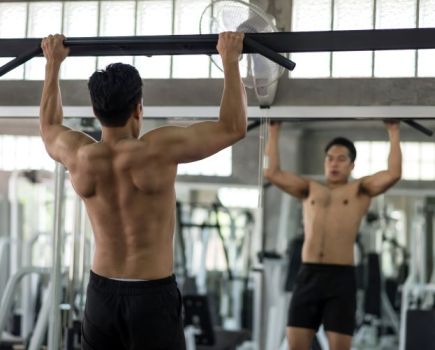This bodyweight workout for runners will help ward off injury, while increasing lower-body strength and power…
You might be regularly donning your kit heading out for runs, but have you ever considered adding a bodyweight workout for runners to your weekly regime? The running training experts at Runna have pulled together the following strength workout to help you reach peak performance. You can do it in a park, using a bench when required, or at the gym or your home, using a step, chair, or table instead. Be sure to also use your best exercise mat for extra support.
How to do this bodyweight workout for runners:
- Complete each exercise back-to-back for 10 reps, keeping rest to a minimum.
- Once one round is complete, rest for 60-90 seconds.
- Repeat twice more for a total of three rounds.
Bodyweight workout for runners: the exercises
1a. Step-up knee drive
1b. Single-leg squat
1c. Bulgarian split squat
1d. Side lunge
1e. Lunge and overhead reach
1f. Mountain climber
Keep reading for full instructions on how to master these bodyweight exercises.
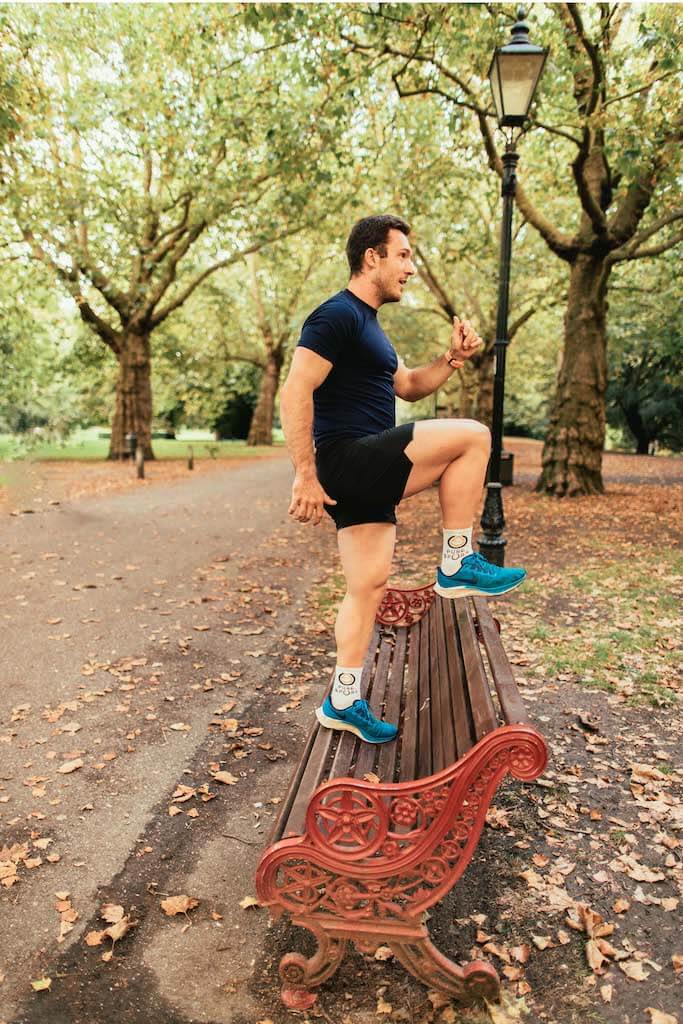
1a. Step-up knee drive
Benefits: Builds hip and leg strength, and helps with muscular imbalances due to it being a single-leg movement.
- Stand facing a box or bench of an appropriate height with your feet together. This will be your starting position.
- Begin the movement by stepping up, putting your left foot on the top of the bench.
- Extend through the hip and knee of your front leg to stand up onto the box.
- As you stand on the box with your left leg, flex your right knee and hip, bringing your knee as high as you can.
- Reverse this motion to step down off the box, then repeat the sequence on the opposite leg.
1b. Single-leg squat
Benefits: Builds strength in both the gluteus medius and glutues maximus at the same time, to aid stride power, making it a great addition to this bodyweight workout for runners.
- Stand on one leg, with your foot pointing straight ahead and the knee of the other leg slightly bent.
- You can have your arms extended for balance or kept at your sides.
- Retract your shoulder blades and keep your back straight.
- Keep your weight centred over the ball of your foot, your upper body upright, and your head facing forward.
- Raise the non-supporting foot from the floor slightly.
- Lower to a squat position, keeping the knee of the supporting leg centred over the ball of the foot.
- Start with shallow squats and work your way closer to the ground.
1c. Bulgarian split squat
Benefits: The Bulgarian split squat is also an excellent way to strengthen your gluteus medius. That’s important for runners, because the gluteus medius plays a critical role in preventing the inward collapse of your knee, a function that goes a long way toward keeping your ankles, knees and hips healthy.
- Find yourself a step, bench or any other contraption that you can rest a foot on – it needs to be about knee height.
- Get into a forward lunge position with torso upright, core braced and hips square to your body, with your back foot elevated on the bench. Your leading leg should be half a metre or so in front of the bench.
- Lower until your front thigh is almost horizontal, keeping your knee in line with your foot. Don’t let your front knee travel beyond your toes.
- Drive up through your front heel back to the starting position, again keeping your movements measured.
1d. Side lunge
Benefits: Lunges help runners control the hips and strengthen the quads, hamstrings, glutes, and core – all muscle groups we rely on to run. They also help identify weaknesses that can lead to running injuries. A great addition to any bodyweight workout for runners.
- Stand with feet shoulder-width apart, toes pointed forward.
- Step out with your right foot as wide as possible and drop your hips back and down.
- Keep the leg straight, keep both soles of feet on the group and make sure your opposite knee is tracking directly over the toe.
- Engage your groin and leg muscles and push back up to a standing position. Push through your heel.
- Repeat on the other side.
1e. Lunge and overhead reach
Benefits: Builds strength in your quadriceps and gluteus muscles, while improving balance, core stability and proprioception.
- Begin with your feet positioned shoulder-width apart and knees slightly bent.
- Inhale as you raise your arms above your head (make the move harder by using a pair dumbbells if you have them).
- Keep the weight directly overhead and centered between your shoulder joints.
- Exhale as you take a comfortable step forward into a deep lunge position.
- Inhale and pause to check your form. Your forward knee should remain over your forward foot and not in front of it.
- Exhale as you forcefully drive your forward heel into the ground. Inhale as you return yourself to the starting position.
1f. Mountain climber
Benefits: A great addition to any workout for runners, this bodyweight move helps develop power in the lower body, which is why athletes frequently use them as a warm-up to help prepare the neuromuscular system for the intensity to come.
- Start in the top of a press-up position.
- Keeping your shoulders locked, alternate jumping each foot forward so your knee comes towards the elbow of the same side, but your hands stay on the ground.
Benefits of strength training for runners:
Whether your running involves partaking in a weekly parkrun, occasionally running while listening to music, or regularly building up massive mileage, your performance will be greatly improved by taking the time to do complementary strength work.
More strength – not just in your legs, but also your core and upper body – equals greater resilience to injury, and the ability to run stronger, with efficient form, for longer.
And you don’t need to spend hours in the gym to build strength for running, as this short and simple workout demonstrates. After working out, be sure to work through some stretching exercises to aid flexibility and prevent injury.

